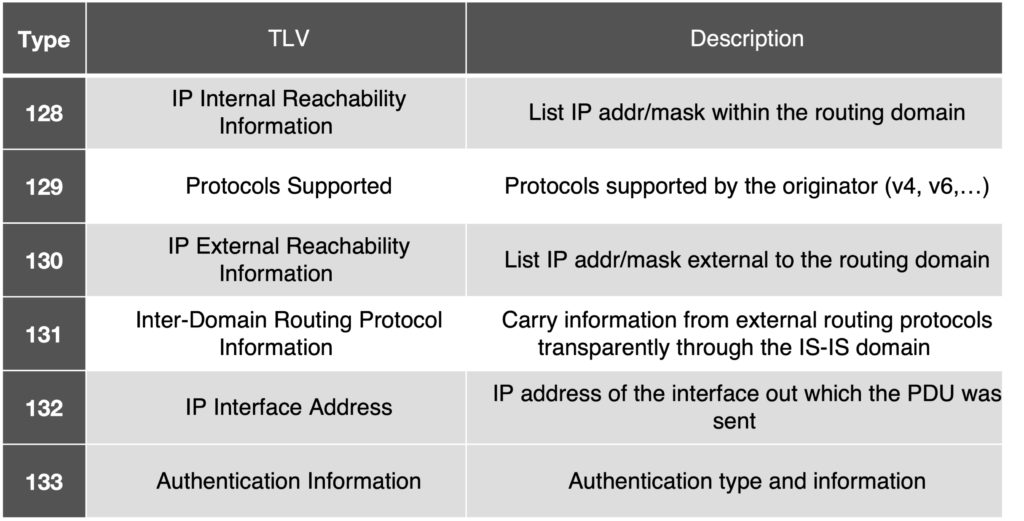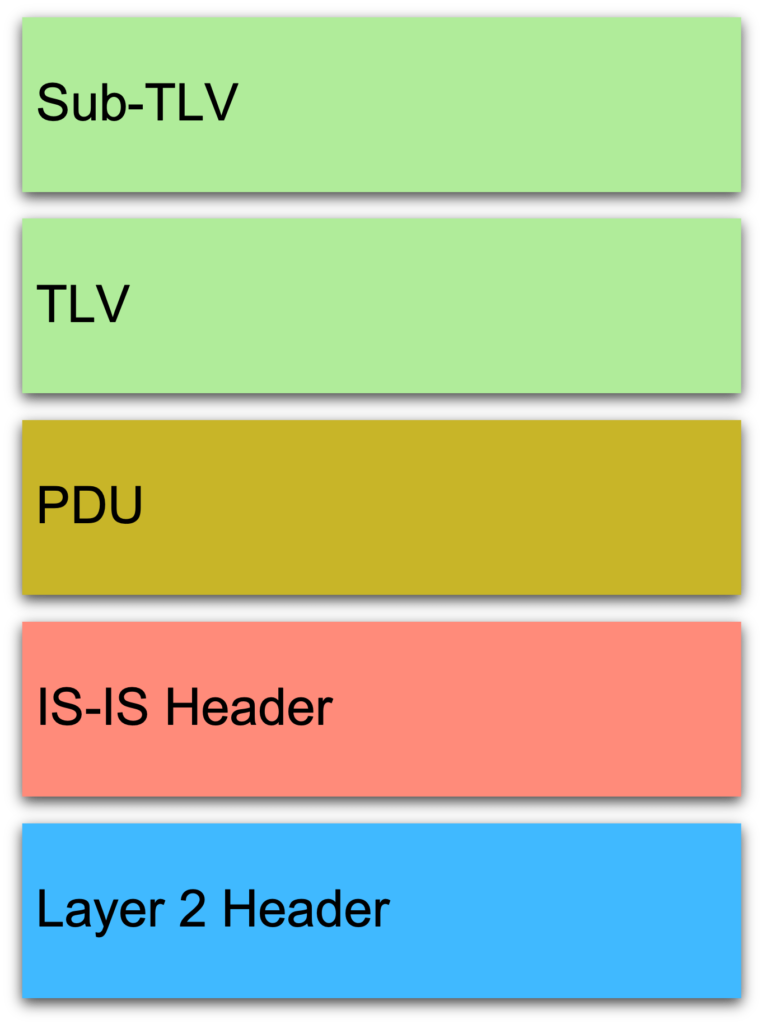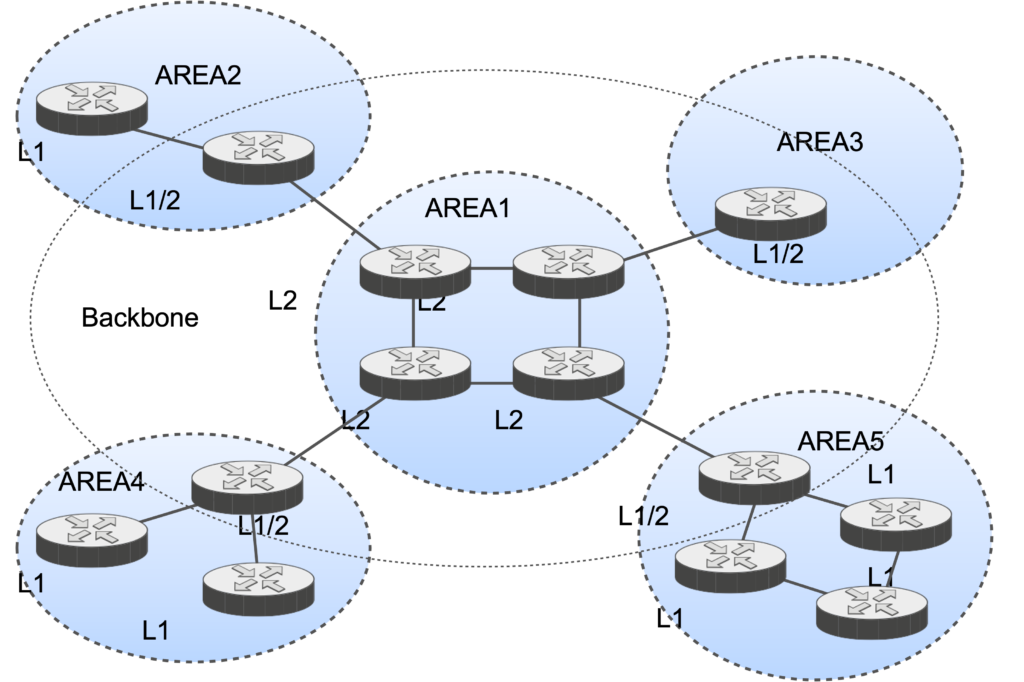IS-IS is a link-state routing protocol, similar to OSPF. If you are looking for Service Provider grade, MPLS Traffic Engineering support, and extendible routing protocol for easier future migration then the only choice is IS-IS.
Commonly used in Service Providers, Datacenter (as an underlay), and some large Enterprise networks.
IS-IS Routing Protocol in Networking
IS-IS works based on TLV format. TLVs provide extensibility to the IS-IS protocol.
IS-IS TLV Codes - Specified in RFC 1195

You don’t need totally different protocol to support new extensions. In IS-IS IPv6, MTR and many other protocols just can be used with additional TLVs.
1. IPv6 Address Family support (RFC 2308)
2. Multi-Topology support (RFC 5120)
3. MPLS Traffic Engineering (RFC 3316)
IS-IS is a Layer 2 protocol and is not encapsulated in IP, thus it is hard if not impossible to attack Layer2 networks remotely, IS-IS is considered more secure than OSPF.
IS-IS uses a NET (Network Entity Title) address similar to OSPF Router ID.
IP support to IS-IS is added by the IETF after ISO invented it for the CLNS. If IS-IS is used together with IP, it is called Integrated IS-IS.
IS-IS doesn’t require an IP address for the neighborship.
ISPs commonly choose addresses as follows:
1. First 8 bits – pick a number (49 used in these examples)
2. Next 16 bits – area ID
3. Next 48 bits – router loopback address (6 bytes, every 4 numbers is 2 bytes)
4. Final 8 bits ( 2 Numbers) is 00 on the routers
Let's say NET ID is: 49.0001.1921.6800.1001.00
When we look at each part of it:
49.0001 is the IS-IS Area ID
2.192.168.1.1(Router loopback) in Area1
3.00 is the NSEL
OSPF vs IS-IS Terminology Comparison
IS-IS vs OSPF
End System (ES) Host
Intermediate System (IS) Router
Circuit Link
Protocol Data Unit (PDU) Packet
Designated IS (DIS) Designated Router (DR)
N/A (no BDIS is used) Backup Designated Router (BDR)
Sub-domain/Level Area
Level 1 IS-IS Domain Non-Backbone Area
Level 2 IS-IS Domain Backbone Area
L1L2 Router Area Border Router (ABR)
Any Intermediate System (IS) Autonomous System Boundary Router (ASBR).
There is no Backup DIS concept within IS-IS, because DIS sends CSNP very often, so routers get the latest info all the time and all routers are neighbors of each other, so they send the LSPs to each other anyway, DIS is like a backup mechanism to ensure receiving LSP.
SPF (Dijkstra) runs when the topology has to be calculated (SPF Tree).
PRC (Partial Route Calculation) runs when IP Routing information has to be calculated.
If a router (IS) receives an LSP where only IP information has changed, it will run
PRC only (Less CPU compare to SPF), thus better compare to OSPF.
IS-IS Scalability
•Scalability can be achieved through IS-IS Multi-level design as well which we will discuss next.
IS-IS has two Levels: Level 2 and Level 1
Levels are similar to the Backbone Area and Non-Backbone areas of OSPF.
Level 2 IS-IS is similar to OSPF Backbone, Level 1 IS-IS is similar to OSPF Non-Backbone Area.
How IS-IS Routing Protocol Works
If the Area ID is the same on the 2 routers, they can set up both L1 and L2 adjacency.
If Area ID is different they can only set up an L2 IS-IS adjacency.
There is no backbone area in IS-IS as in the case of OSPF. There are only contiguous Level2 routers.
Level 2 domains have to be contiguous.
But still for the new learners, the IS-IS level 2 domain can be considered similar to the OSPF backbone area.
There are three types of routers in IS-IS
IS-IS Level 1 Router
1. Can only form adjacencies with Level 1 routers within the same area
2. LSDB only carries an IS-IS intra area information
3. Use the closest Level 2 router to exit the area
4. This may result in suboptimal routing
IS-IS Level 2 Router
1. Can form adjacencies in multiple areas
2. Exchange information about the whole network
IS-IS Level1-2 Router
1. These routers keep separate LSDB for each level, 1 for Level 1database, and 1 for level 2 databases.
2. These routers allow L1 routers to reach other L1 in the different areas via the L2 topology.
Level 1 routers look at the ATT- Attached bit in L1 LSP of L1-L2 routers.
And use it as a default route to reach the closest Level 1-2 router in the area. This can create suboptimal routing in IS IS network.
The L1 domain is similar to
OSPF Totally NSSA Area since the L1 domain doesn’t accept anything other than the default route from the Level 2 domain and redistribution is allowed into the L1 domain.





